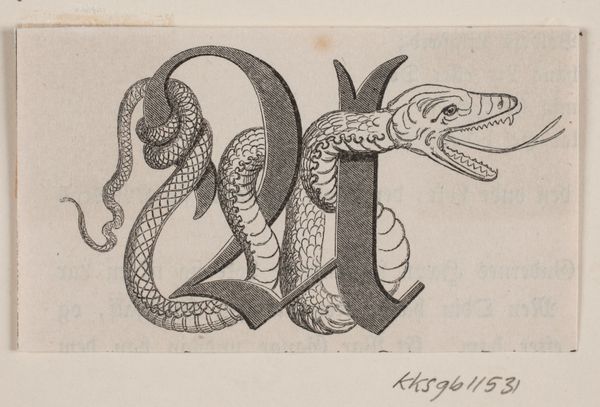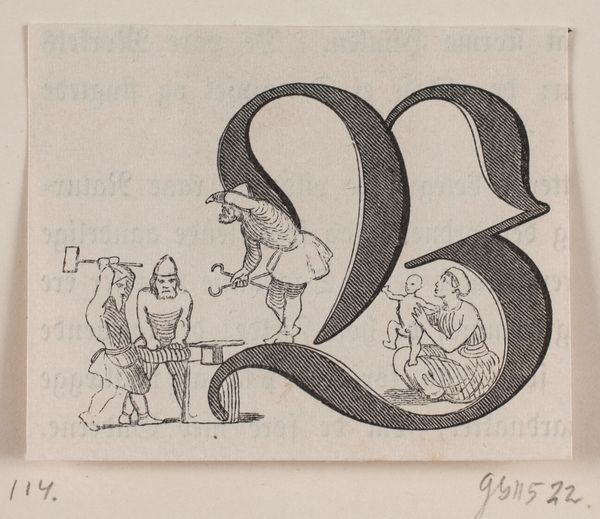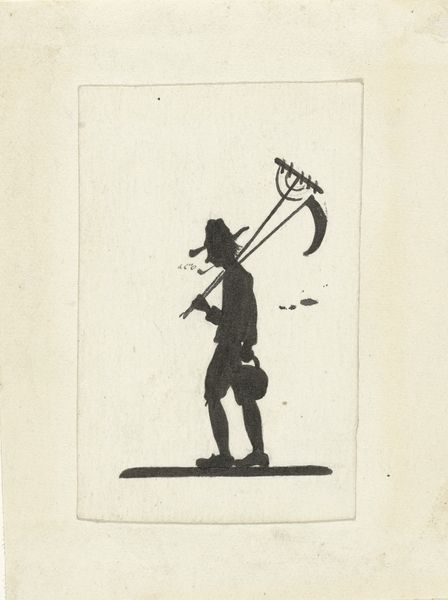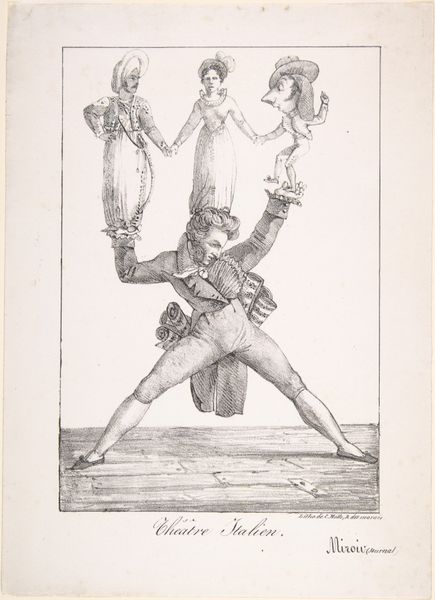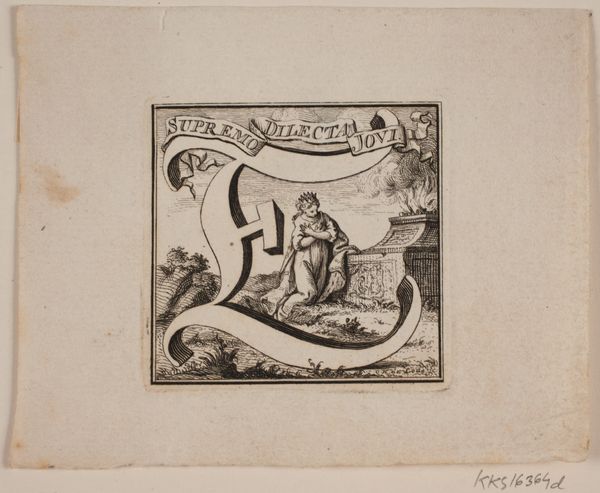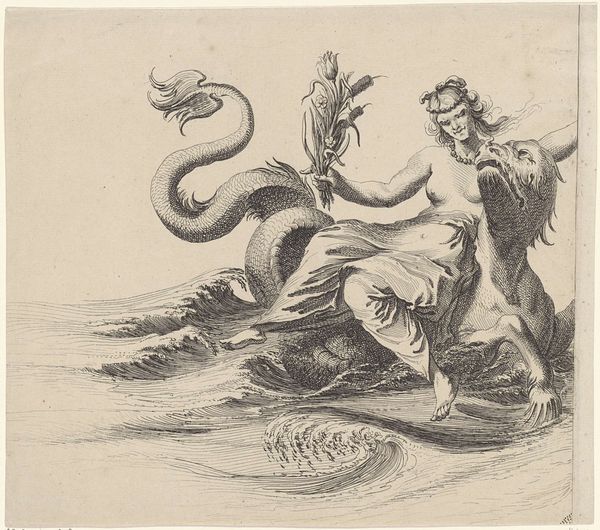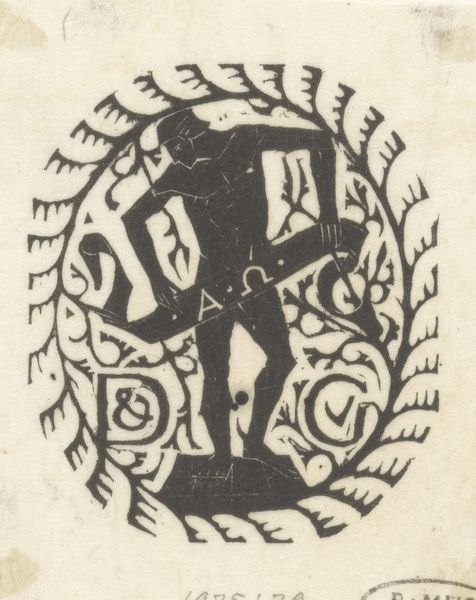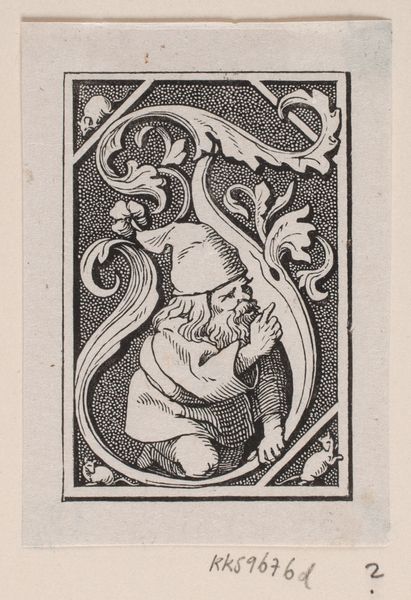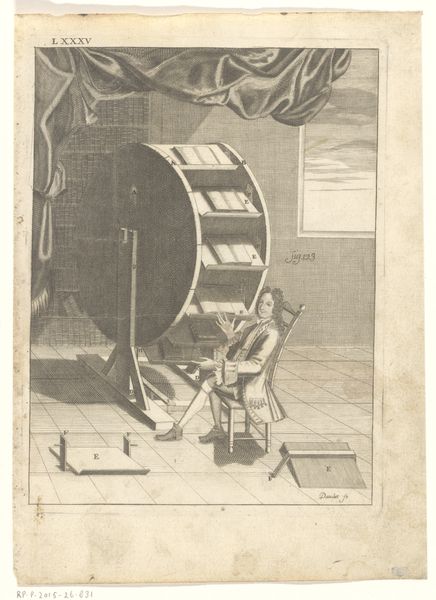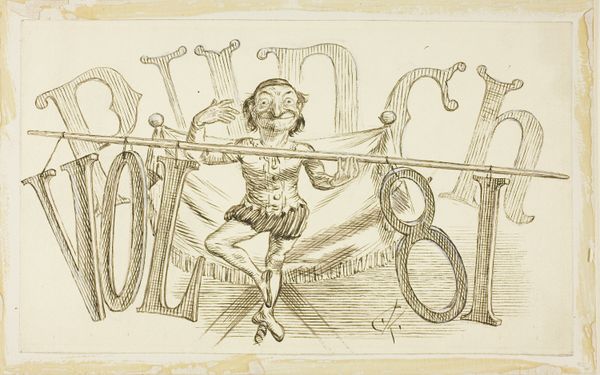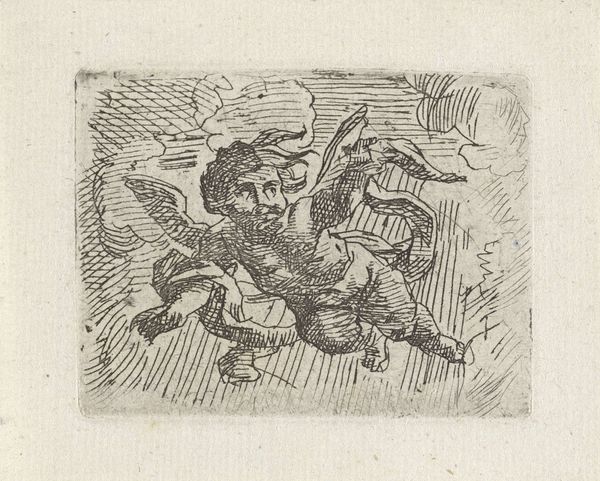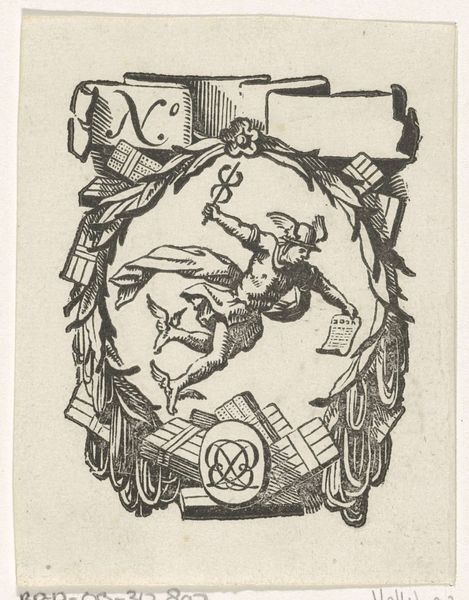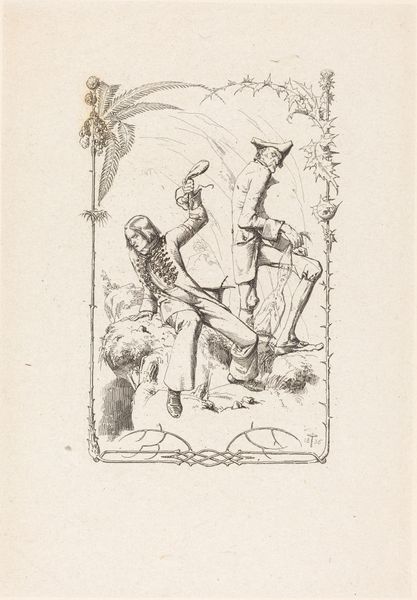
Dimensions: 46 mm (height) x 49 mm (width) (bladmaal)
Curator: So, here we have Axel Theodor Kittendorff's "Initialet D," a woodcut from 1851, housed here at the SMK. Editor: My first thought? Intense! That character crammed in the "D" looks like he's leading a midnight raid... or maybe he's just dramatically bringing the firewood in. Curator: It’s interesting you see intensity. Consider the context. In the mid-19th century, artists were fascinated with allegorical figures representing virtues, historical moments, even letters themselves. This isn't merely decoration. It evokes Romantic ideals of heroism and individual action. Editor: Heroic letter carriers, perhaps? I dig that. Still, the poor guy’s contorted, hoisting that torch like it weighs a ton. You've got this gorgeous, ornate initial, and then… this almost comic desperation. Does it poke fun at Romanticism a bit? Curator: Perhaps subtly. Romanticism could lean toward the grandiose, ripe for gentle satire. But think also about the rise of print culture at the time. Initial letters like these ornamented printed materials, lending authority and beauty to texts intended for wide circulation. Editor: That makes sense, placing it within the booming printing press moment, turning these letters almost into protagonists in their own right. Like each new chapter begins with…bam…a tiny hero. Curator: Precisely! The "D" isn’t just a letter; it’s a stage for symbolic drama, playing into broader cultural aspirations around literacy and knowledge. This piece demonstrates a pivotal moment where art began functioning differently in relation to audiences. Editor: You’ve totally flipped my read on this. Initially, it looked kinda forced but now, I see an earnest effort – however absurd – to democratize knowledge one decorative letter at a time. Suddenly feels less about dramatic flair and more about diligent craftsmanship, trying to capture the zeitgeist. Curator: Indeed, art historical inquiry, when successful, urges us to move beyond our first impressions and reckon with the dynamics of image production and consumption at any given moment in time. Editor: Okay, point taken. So, next time I encounter an over-the-top illustration, I'll try thinking about its role in the information revolution, rather than just giggling. Curator: It's always about layering and unpacking, isn't it? That's the fun of art history!
Comments
No comments
Be the first to comment and join the conversation on the ultimate creative platform.

